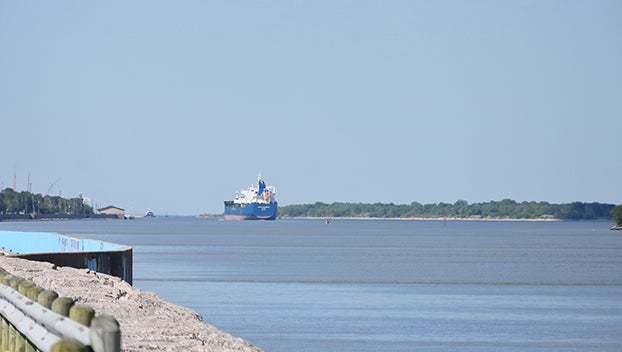CHESTER MOORE JR. ON OUTDOORS: Check the weather before fishing
Published 11:33 pm Saturday, May 21, 2016
It is amazing what we will do to catch a fish.
We invest thousands of dollars in boats and tackle, get up at ridiculous hours, endure extreme heat and occasionally risk very dangerous conditions here in Southeast Texas.
Of those things, the latter is an area I am becoming more concerned with over time. After having had several severely dangerous encounters in the Gulf, on Sabine Lake and at Toledo Bend I can attest safety is more important than catching a fish.
Seventeen years ago, my father Chester Moore Sr. and our friend Bill Killian almost didn’t make it home after getting caught between two emerging thunderstorms at the short rigs. By the time the wind picked up and lighting started popping all around, we were in trouble.
We were in a small boat and we had to hit every wave just right to make sure we didn’t take one over the bow. It was a truly fragmenting experience and we were never so happy to get inside the jetty walls and eventually back to the boat ramp at Sabine Pass. I don’t know who owns that boat now, but my handprints are probably still embedded in that steering wheel. I have never gripped anything so hard in my life.
That was truly frightening.
Back in the mid-1990s, I went bass fishing with my grandfather’s friend Junior Brown on Toledo Bend. We were a pretty good way for his camp when a thunderstorm rolled in and the waves we experienced on the way back on the open lake were every bit as bad as those I would encounter a few years later in the Gulf.
Never think the conditions on the lakes in our are can’t get bad. The fact is they can get deadly.
I found some weather tips from the National Weather Service, that we should all keep in mind.
Regarding thunderstorms, NWS officials said “There are no specific warnings or advisories for lightning but all thunderstorms produce lightning. A lightning strike to a vessel can be catastrophic, especially if it results in a fire or loss of electronics. If your boat has a cabin, stay inside and avoid touching metal or electrical devices. If your boat doesn’t have a cabin, stay as low as you can in the boat.”
“Boaters should use extra caution when thunderstorm conditions exist and have a plan of escape. Mariners are especially vulnerable as because you may be unable to reach port quickly. Do not venture out if thunderstorms are a possibility. If you do venture out and recognize thunderstorms nearby, head to port or safe shelter as quickly as possible. Ultimately, boating safety begins ashore with planning and training. Keep in mind that thunderstorms are usually brief so waiting it out is better than riding it out.”
As I mentioned in a recent column, if you can see the storm, it is probably too late to be guaranteed making it back before getting hit. Invest in a good weather alert app for your phone.
Another thing NWS officials warn about is fog.
“Chances are when you are on the water, you will occasionally encounter fog, making navigation a challenge. Fog forms when air over a warm water surface is transported over a colder water surface, resulting in cooling and condensation. Fog is usually considered dense if it reduces visibility to less than 1 mile. It can form quickly and catch boaters off guard. Visibility can be reduced to a few feet, disorienting boaters. Learning to navigate through fog (or avoiding it) is critical to safe boating.”
• Slow down to avoid collisions.
• Turn on all of your running lights, even in daytime.
• Listen for sounds of other boats that may be near you or for foghorns and bells from nearby buoys.
• VHF NOAA Weather Radio should broadcast important information concerning the formation, movement or dissipation of the fog. Pay close attention.
• If your vessel has radar, use it to help locate dangers that may be around you.
• Use GPS or a navigation chart to help obtain a fix on your location.
• If you are unable to get your bearings, stay put until the fog lifts but make sure you are in a safe location.
• Be familiar with horn and bell sounds you should produce to warn others around you when in dense fog.
• Have a compass available. Even if you don’t know where you are in the fog, with a compass you can determine the direction you are navigating.
Be careful out there and take the weather seriously. There is nothing manly or cool about riding out a thunderstorm in the Gulf or getting pounded by big waves on the lakes.
I would much rather be safe than sorry.
•
To contact Chester Moore, email him atchester@kingdomzoo.com. You can hear him on “Moore Outdoors” Fridays from 6-7 p.m. on Newstalk AM 560 KLVI or online at klvi.com.





